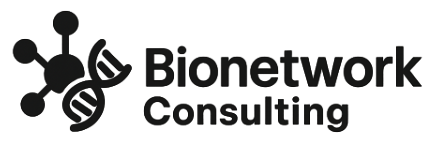
In today’s global healthcare landscape, pharmaceutical companies face intense pressure to innovate quickly while maintaining safety, quality, and compliance. Blockbuster drugs take years—and often billions of dollars—to reach the market. With rising competition, growing demand for precision medicine, and ever-changing regulations, the need for stronger pharmaceutical strategy, continuous pharmaceutical process improvement, and proactive regulatory agency support has never been greater.
The good news is that technology is rewriting the rules of pharmaceutical development. Artificial intelligence (AI), advanced analytics, digital twins, automation, and blockchain are no longer buzzwords—they are reshaping how companies design trials, monitor manufacturing, and collaborate with regulators.
Let’s dive into the latest updates, emerging technologies, and strategies that are defining the future of the pharmaceutical industry.
Reimagining Pharmaceutical Strategy in a Digital Era
The backbone of success in pharma lies in a strong, forward-looking Pharmaceutical strategy. Traditionally, strategies focused on cost reduction, pipeline expansion, and compliance. Today, the shift is toward agility, data-driven decision-making, and patient-centric approaches.
Key trends shaping pharmaceutical strategy include:
- AI and Machine Learning in Drug Discovery: Algorithms now predict molecule behavior, shortening drug discovery timelines from years to months. Companies like Insilico Medicine and BenevolentAI are setting new benchmarks.
- Precision Medicine: Strategies are moving from “one-size-fits-all” drugs to personalized therapies based on genetics, lifestyle, and biomarkers.
- Decentralized Clinical Trials (DCTs): Instead of relying solely on large trial sites, companies use digital platforms and wearable devices to collect real-world patient data, reducing costs and improving recruitment.
- Sustainability as a Strategic Priority: With rising focus on ESG (Environmental, Social, and Governance), pharmaceutical firms are aligning strategies to reduce waste, lower emissions, and adopt greener manufacturing.
A well-executed strategy ensures companies don’t just survive regulatory scrutiny—they thrive in a highly competitive environment.
Pharmaceutical Process Improvement: Efficiency Meets Innovation
At the operational level, Pharmaceutical Process Improvement is the key to faster approvals, reduced costs, and improved product quality. Lean principles and Six Sigma once dominated process optimization, but now digital transformation is driving the next wave of improvements.
Latest technologies powering process improvement include:
- Digital Twins in Manufacturing
A digital twin is a virtual replica of a manufacturing process that allows real-time monitoring, simulation, and troubleshooting. This technology enables companies to predict equipment failures, optimize workflows, and ensure consistent product quality without physical disruption. - Advanced Analytics for Quality Assurance
Big data analytics helps manufacturers monitor deviations, identify risks early, and optimize batch yields. Predictive analytics also reduces human error and ensures compliance with GxP standards. - Robotics and Automation
From robotic pill packaging to automated sterile filling, automation improves accuracy, speed, and safety in pharmaceutical manufacturing. Robotics also helps companies comply with strict FDA sterility requirements. - Continuous Manufacturing
Unlike traditional batch processing, continuous manufacturing enables uninterrupted drug production. This reduces lead times, improves scalability, and lowers operational costs. - Blockchain for Supply Chain Integrity
Counterfeit drugs are a billion-dollar problem. Blockchain ensures transparency and traceability across the supply chain, safeguarding patient safety and regulatory compliance.
By adopting these innovations, pharmaceutical companies are not only improving efficiency but also ensuring patients receive high-quality medicines faster.
Regulatory Agency Support: A Collaborative Future
One of the biggest hurdles for pharmaceutical companies is navigating the complex web of global regulations. Every market—from the FDA in the U.S. to EMA in Europe and PMDA in Japan—has unique requirements. Delays in regulatory approvals can cost millions, making Regulatory agency support critical to a successful launch.
Key updates in regulatory support include:
- RegTech (Regulatory Technology): Cloud-based platforms and AI tools help streamline submissions, track compliance, and automate reporting for faster regulatory approvals.
- FDA’s Push for Innovation: The FDA has been encouraging the use of real-world evidence (RWE) and digital health technologies in clinical trials, opening new opportunities for faster approvals.
- Global Regulatory Harmonization: Initiatives like ICH (International Council for Harmonisation) are working to standardize guidelines across regions, making global expansion easier for pharma companies.
- Early Engagement with Regulators: Many companies now collaborate with agencies early in the drug development lifecycle, gaining feedback before large-scale trials, which reduces costly delays.
Proactive regulatory support ensures that compliance becomes a business enabler, not a bottleneck. Companies that align with regulators from the start gain a competitive advantage in reaching the market sooner.
Integrating Strategy, Process, and Regulation for Competitive Advantage
The future of pharma lies in integrating pharmaceutical strategy, process improvement, and regulatory agency support into a cohesive framework. Consider the following real-world scenario:
A biotech startup uses AI-driven drug discovery (strategy), scales production using continuous manufacturing (process improvement), and engages with the FDA early through digital regulatory submissions (agency support). The result? Faster approvals, lower costs, and a stronger competitive position.
This integrated approach allows companies to innovate with confidence, reduce risks, and deliver breakthrough therapies that meet patient needs globally.
Case Studies: Innovation in Action
- Pfizer-BioNTech COVID-19 Vaccine
The rapid development and approval of the vaccine demonstrated how pharmaceutical strategy, process improvement, and regulatory collaboration can achieve historic milestones. Use of mRNA technology, continuous manufacturing, and proactive regulatory engagement made it possible in record time. - Novartis’ Use of Digital Twins
Novartis deployed digital twin technology to model its production processes, significantly reducing downtime and improving batch yields. This innovation aligned with their strategy of digital-first manufacturing. - FDA’s Real-World Evidence Framework
The FDA’s adoption of real-world data in evaluating drug safety has enabled faster approvals for oncology and rare disease treatments, reshaping how companies approach regulatory strategy.
Looking Ahead: The Future of Pharma
The pharmaceutical industry is at the intersection of science, technology, and regulation. Looking ahead, we can expect:
- Wider adoption of AI and quantum computing for faster molecule design.
- Expansion of decentralized trials with AI-powered monitoring tools.
- More partnerships between pharma companies and tech giants.
- Greater global alignment on regulations for digital health and biologics.
- Increased focus on sustainability in manufacturing and supply chains.
Companies that embrace a forward-thinking pharmaceutical strategy, invest in pharmaceutical process improvement, and strengthen regulatory agency support will be well-positioned to lead the next era of innovation.
Conclusion
The pharmaceutical industry is no longer just about producing drugs—it’s about creating smarter, faster, and safer systems that deliver real impact. By integrating cutting-edge pharmaceutical strategy, leveraging technology for pharmaceutical process improvement, and building strong collaborations through regulatory agency support, companies can transform challenges into opportunities.
As the pace of change accelerates, the leaders will be those who balance innovation with compliance, ensuring that life-saving therapies reach patients safely, swiftly, and sustainably.
